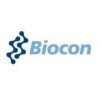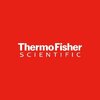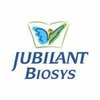Filter interviews by
Kemwell Biopharma Quality Controller Interview Questions and Answers
Kemwell Biopharma Quality Controller Interview Experiences
1 interview found
I applied via Referral and was interviewed in Jul 2020. There was 1 interview round.
Interview Questionnaire
3 Questions
- Q1. Questions related to skills and techniques mentioned in your resume
- Q2. Questions regarding your previous projects and techniques used in it
- Q3. Questions about the assay principles which are performed in the lab
Interview Preparation Tips
Top trending discussions






Interview questions from similar companies

I applied via Company Website and was interviewed in Aug 2020. There was 1 interview round.
Interview Questionnaire
3 Questions
- Q1. I want to job in quality controller or qulaity assuarance pof. If there is any vaccancy please informed me
- Q2. Iam interested qc or qa positions
- Q3. Yez iam interested
Interview Preparation Tips

I applied via Naukri.com and was interviewed in Dec 2019. There were 3 interview rounds.
Interview Questionnaire
2 Questions
- Q1. Techincal aspects..
- Q2. Purely will be on your profile.
Interview Preparation Tips

I applied via Naukri.com and was interviewed before Nov 2021. There were 3 interview rounds.

(2 Questions)
- Q1. What is use of power factor
- Ans.
Power factor is the ratio of real power to apparent power in an AC circuit.
Power factor helps in determining the efficiency of an electrical system.
A high power factor indicates that the system is using power efficiently.
A low power factor indicates that the system is not using power efficiently and can result in higher energy bills.
Power factor correction techniques can be used to improve the power factor of a system.
...
- Q2. What is DG sychronising factors
- Ans.
DG synchronizing factors are the parameters that ensure the proper synchronization of multiple generators in a power system.
DG synchronizing factors include frequency, voltage, phase angle, and rate of change of frequency.
These factors must be carefully monitored and adjusted to ensure that the generators are operating in sync and not causing any damage to the power system.
For example, if the frequency of one generator...
(1 Question)
- Q1. Tell about yourself and your previous experience
Interview Preparation Tips

I applied via Company Website and was interviewed in Apr 2021. There were 4 interview rounds.
Interview Questionnaire
1 Question
- Q1. Questions were based on the domain which you are applying for. For Medical writing domain they asked about what types of documents I have worked on.
Interview Preparation Tips

Deputy Manager Interview Questions & Answers
Bharat Biotech Internationalposted on 9 Jul 2025
I appeared for an interview in Jun 2025, where I was asked the following questions.
- Q1. How you improve GMP culture
- Q2. How train new persons in Vaccines manufacturing

(2 Questions)
- Q1. Production piping regarding
- Q2. Hydro and erection and commissioning.

Deputy Manager Interview Questions & Answers
Serum Institute of Indiaposted on 20 Jan 2025
I applied via Approached by Company and was interviewed in Jul 2024. There was 1 interview round.
(2 Questions)
- Q1. Can you please provide a self-introduction?
- Ans.
I am a dedicated and experienced professional with a strong background in leadership and team management.
Over 5 years of experience in management roles
Proven track record of successfully leading teams to achieve goals
Strong communication and interpersonal skills
Ability to problem-solve and make strategic decisions
Passionate about developing and mentoring team members
- Q2. What is the role of erythropoietin in increasing hemoglobin levels in patients with chronic kidney disease (CKD)?
Interview Preparation Tips

I applied via Referral and was interviewed before Aug 2022. There were 3 interview rounds.

(1 Question)
- Q1. Technical questions related to core engg. field.
(1 Question)
- Q1. Typical HR related questions such as past company experience, any issues with past employers, work environment & policies of the organization etc...
Interview Preparation Tips

I applied via Walk-in

(2 Questions)
- Q1. How to supervise a team?
- Ans.
Supervising a team involves setting clear expectations, providing support, giving feedback, and fostering a positive work environment.
Set clear goals and expectations for each team member.
Provide necessary resources and support to help team members succeed.
Give regular feedback on performance and provide opportunities for growth.
Encourage open communication and collaboration among team members.
Lead by example and foste...
- Q2. What are the technical specifications of solvent?
- Ans.
Solvent technical specifications include boiling point, flash point, density, and solubility.
Boiling point: The temperature at which the solvent changes from liquid to gas.
Flash point: The lowest temperature at which the solvent can vaporize to form an ignitable mixture in air.
Density: The mass per unit volume of the solvent.
Solubility: The ability of the solvent to dissolve other substances.
Example: Acetone has a boil...
Interview Preparation Tips
- QC
Tell us how to improve this page.
Kemwell Biopharma Interviews By Designations
- Kemwell Biopharma Junior Executive Interview Questions
- Kemwell Biopharma Quality Control and Microbiologist Interview Questions
- Kemwell Biopharma Quality Controller Interview Questions
- Kemwell Biopharma Junior Technician Interview Questions
- Kemwell Biopharma QA Associate Interview Questions
- Kemwell Biopharma Senior Analytical Chemist Interview Questions
- Kemwell Biopharma Executive Interview Questions
- Kemwell Biopharma QC Executive Interview Questions
- Show more
Interview Questions for Popular Designations
Interview Questions from Similar Companies
Kemwell Biopharma Quality Controller Reviews and Ratings
based on 1 review
Rating in categories
|
Junior Executive
86
salaries
| ₹2.9 L/yr - ₹5.4 L/yr |
|
Executive
70
salaries
| ₹4 L/yr - ₹7.3 L/yr |
|
Senior Executive
43
salaries
| ₹5.2 L/yr - ₹9.1 L/yr |
|
Assistant Manager
28
salaries
| ₹8.6 L/yr - ₹15.1 L/yr |
|
Research Associate
18
salaries
| ₹4.5 L/yr - ₹6.3 L/yr |

Biocon Limited

Biocon Biologics

Thermo Fisher Scientific

Panacea Biotec
- Home >
- Interviews >
- Kemwell Biopharma Interview Questions











